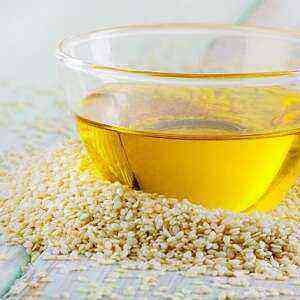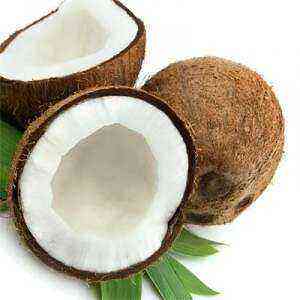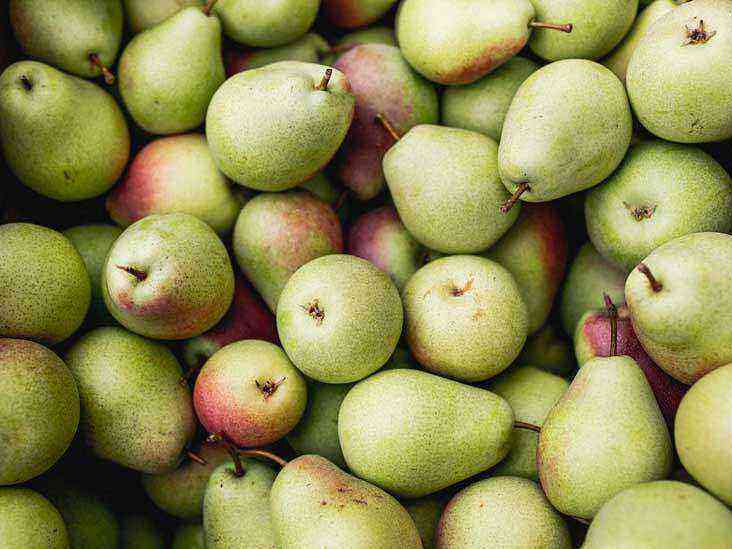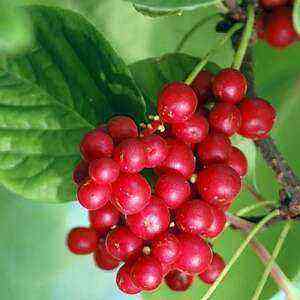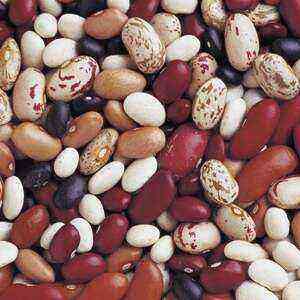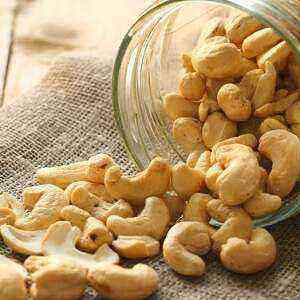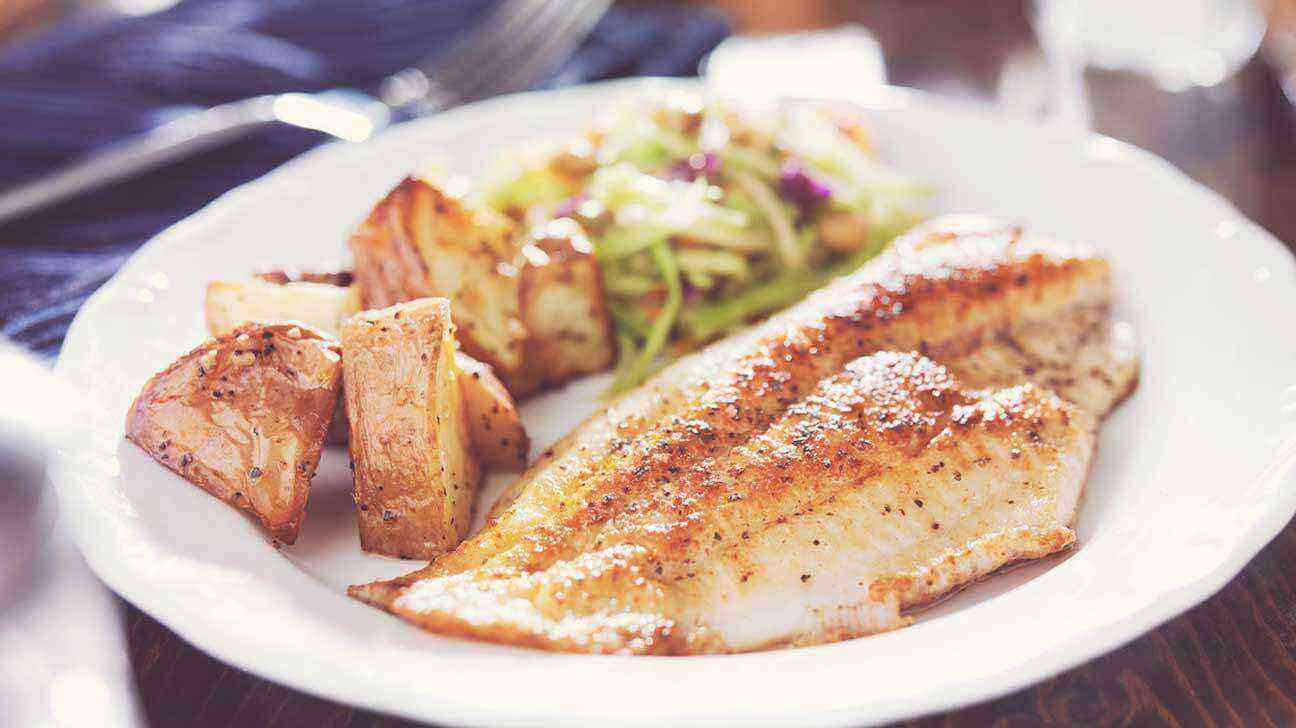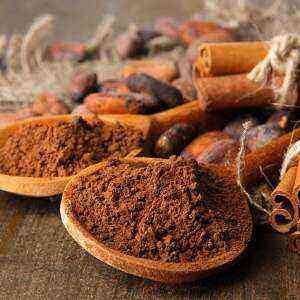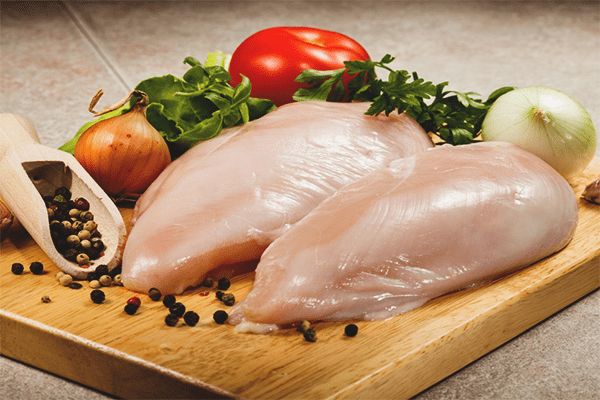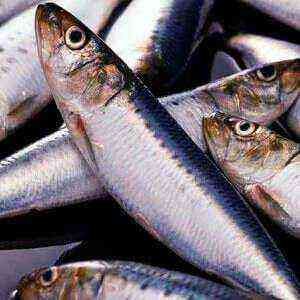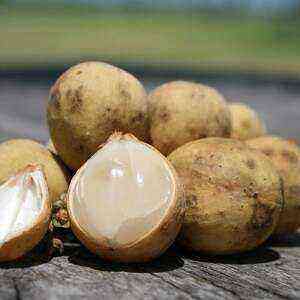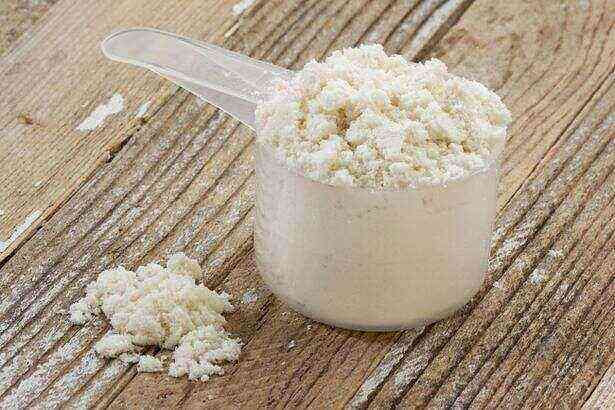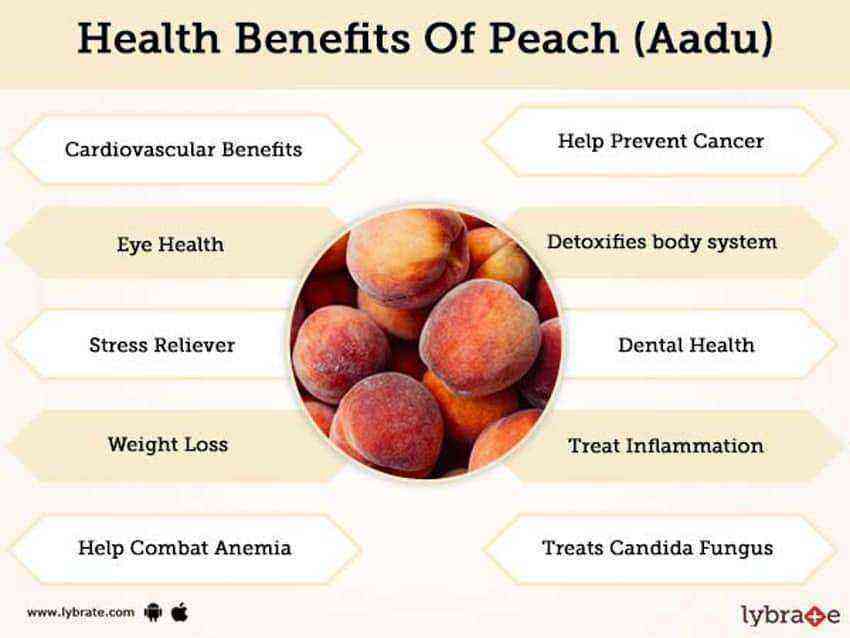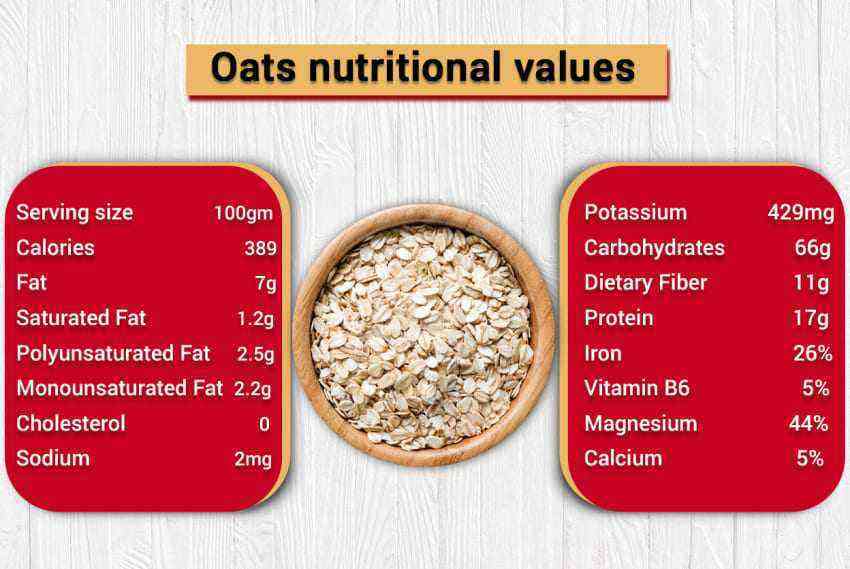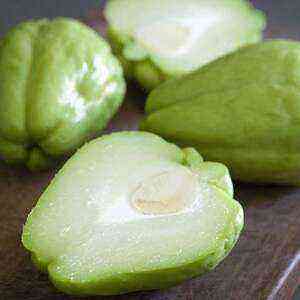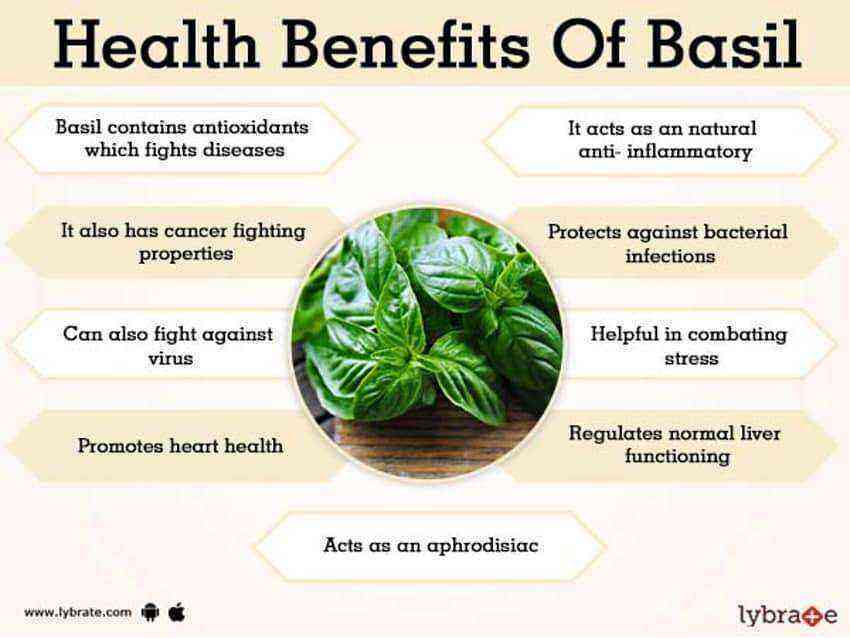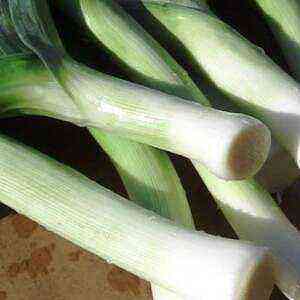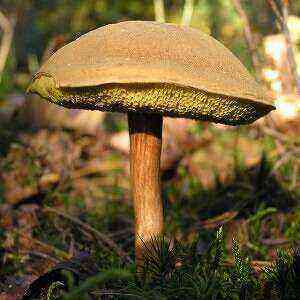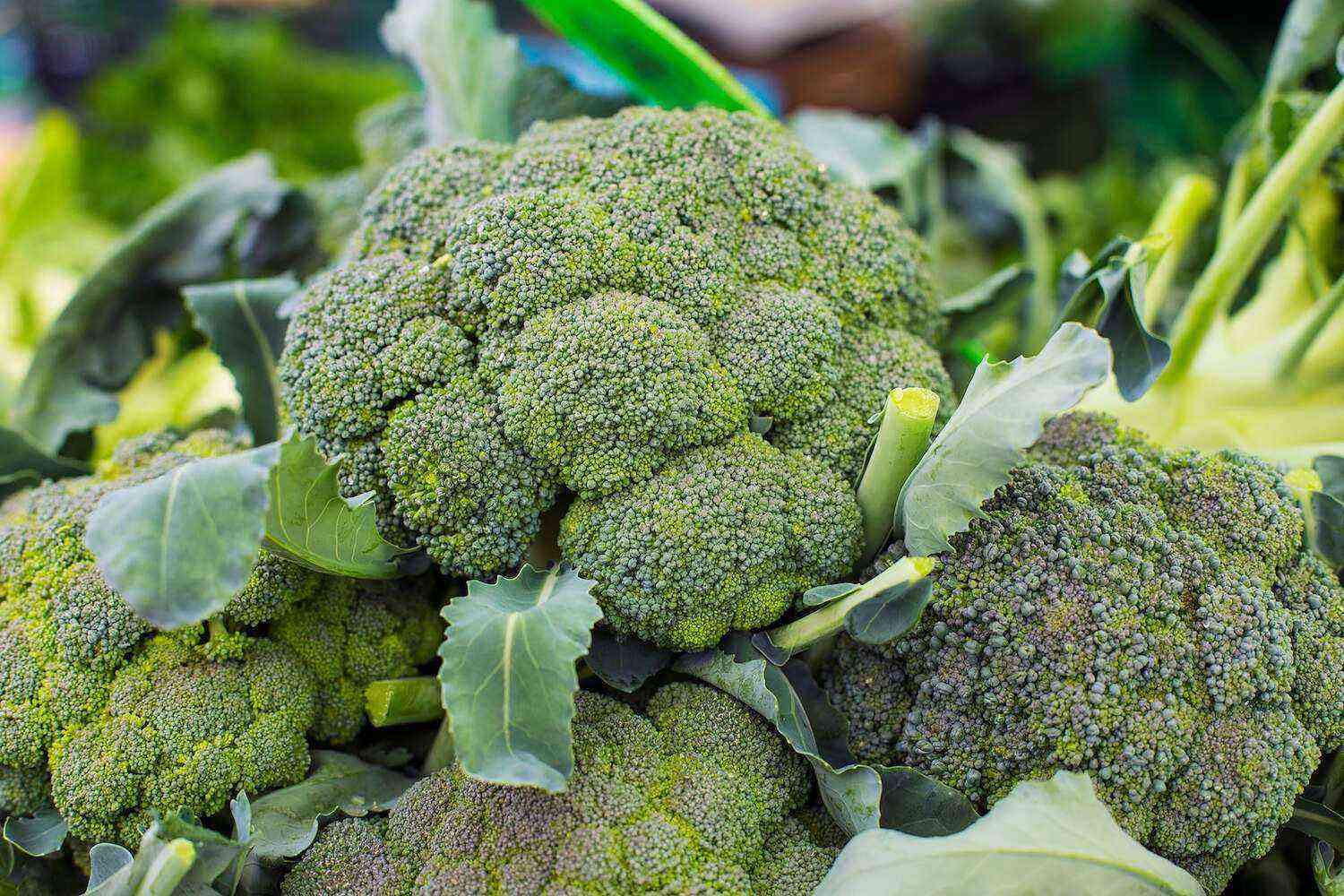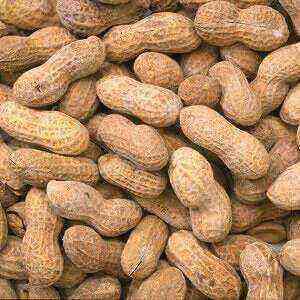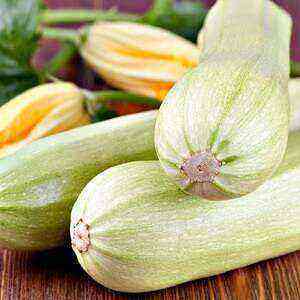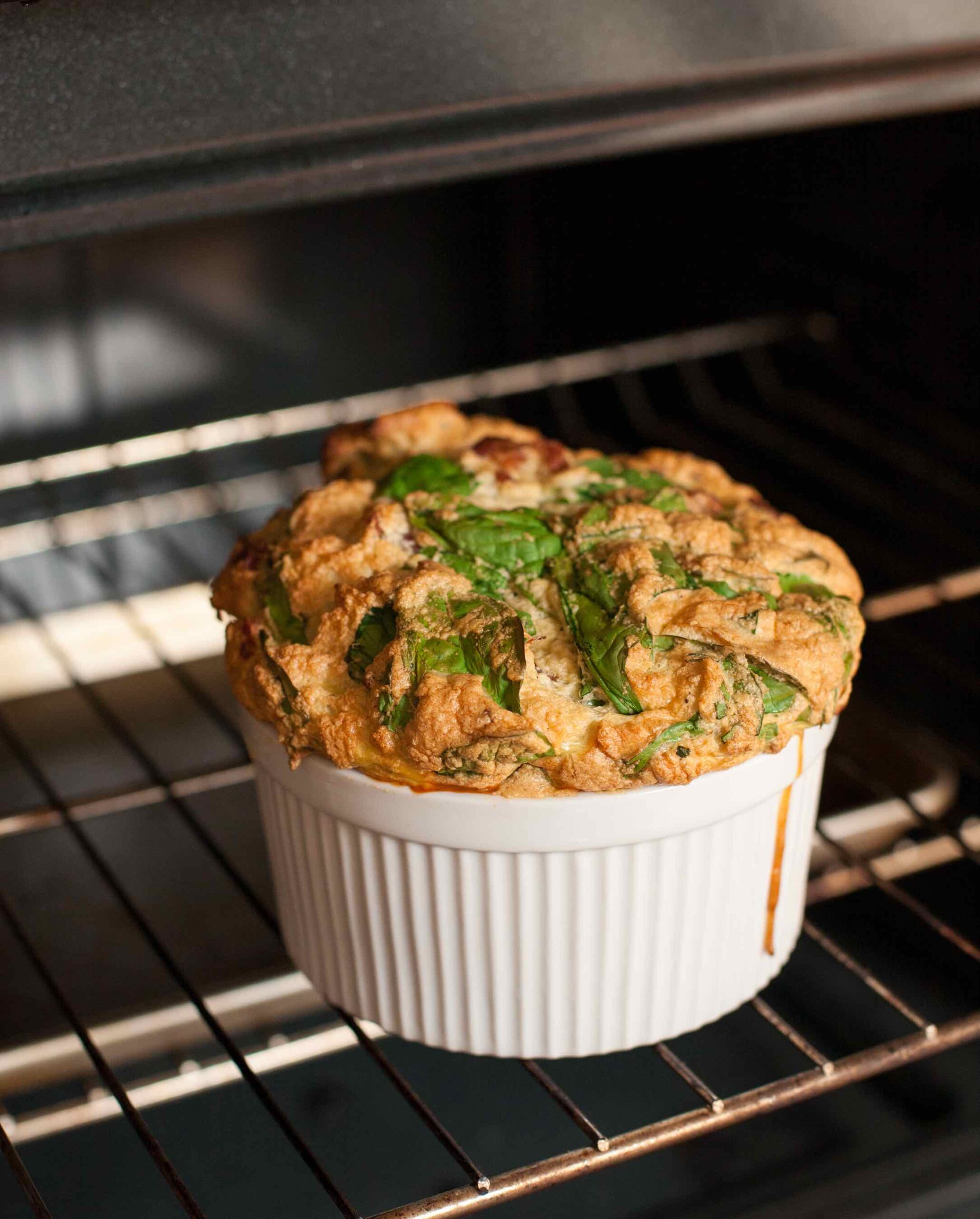
What is feijoa?
Feijoa – a representative of the myrtle family, which also includes guava and eucalyptus. The homeland of this plant is cool subtropical and tropical highlands in southern Brazil, Uruguay, Paraguay, western and northern Argentina. This is an evergreen perennial shrub, which, however, under favorable circumstances, is able to form a tree, sometimes reaching 7 meters. Nowadays, feijoa is grown as an ornamental or garden plant. In the spring months, it pleases the eye with beautiful yellowish-pink flowers with long red stamens. The leaves of this culture also look interesting: from the outside they are glossy green and silvery velvet from the bottom.
Fruits appear about six months after flowering. They are small – from 2 to 8 cm in length and weigh about 50 grams, dull green in color with a whitish bloom. The skin of ripe fruits is thin, but inedible. In a translucent juicy pulp, from two to those dozens of small seeds are hidden. The taste of ripe fruits is quite interesting – a cross between strawberries, pineapple and guava, although some capture a banana-pineapple composition in the delicate pulp of feijoa. The fragrance is most often described as a combination of peppermint and pineapple.
Today botanists are aware of the existence of several dozen species of feijoa.
In the southern hemisphere fruits from late March to June, and in California gardens harvest is harvested during October-December. For the first time, the harvest of feijoa fruit in the wilds of southern Brazil was gathered by German botanist Friedrich Zelo. And it happened in 1815 year. This plant got to Europe thanks to another botanist – the Frenchman Eduardo Andre. He was brought to California in America only by 1900, and the people of New Zealand first saw a tree on their lands only in 1920.
For commercial purposes, fruits are grown in New Zealand, USA (California), Australia, Bolivia, Chile, Colombia and other parts of South America.
Useful components

Feijoa contains substances that chemists call saponins. We will not bore you with “chemistry lessons,” we will only say that these are very useful substances of plant origin, which are also found in alfalfa, lentils, and soy. Studies have shown that saponins can prevent malignant degeneration of cells and lower cholesterol.
Another group of chemical elements with anti-cancer properties are flavonoids. They are also present in large quantities in the fruits of feijoa. In addition, these compounds are useful for the prevention of cardiovascular diseases.
These exotic fruits are rich in vitamin C and fiber good for digestion. Feijoa belongs to highly alkaline foods that help maintain a healthy level of body acidity.
Nutrition Facts (per 100 g)
Caloric content 55 kcal Proteins 0,98 g Fats 0,6 g Carbohydrates 13 g Fiber 6,4 g Vitamin A 6 IU Vitamin C 32,9 mg Vitamin E 0,16 mg Vitamin K 3,5 μg Vitamin B1 0,006 mg Vitamin B2 0,018 mg Vitamin B3 0,295 mg Vitamin B5 0,223 mg Vitamin B6 0,067 mg Vitamin B9 23 μg Potassium 172 mg Sodium 3 mg Calcium 17 mg Copper 0,04 mg Iron 0,14 mg Magnesium 9 mg Manganese 0,08 mg Phosphorus 19 mg Zinc 0,06, XNUMX mg
How to choose feijoa
Ripe fruits are always very fragrant, slightly soft (the consistency of a banana), dark green fruits. In overripe fruits, the core turns brown. Ripe fruits are stored at room temperature for no longer than 2 days. Already on the third day, although they will not change externally, their taste characteristics will suffer.
The freshly cut flesh is clean and translucent, with a jelly-like consistency, but closer to the skin is dense flesh.
Health benefits
Supports the digestive system

Does not raise blood sugar
People with type 2 diabetes can safely consume this fruit because it belongs to the low glycemic index product category. This means that splitting in the body, it is slowly absorbed into the bloodstream, preventing sudden changes in the level of glucose in the bloodstream.
Stabilizes blood pressure
The advantages of feijoa include the ability to prevent an increase in blood pressure. The rich content of potassium and low sodium levels help to relax the blood vessels and ensure proper blood pressure in the body.
Reduces the risk of developing heart disease
Fiber, ascorbic acid, vitamin B6 and potassium are known to be helpful in maintaining heart health. Named substances in sufficient quantities contained in the fruit of feijoa. In addition, it is important to remember that these fruits cleanse the body of excess cholesterol, which is also important for a healthy heart.
Helps fight infections
Feijoa pulp in 100 g contains about 82 percent of the recommended daily intake of vitamin C. And, as you know, it is a powerful natural antioxidant that helps the body resist infections and viral diseases. In addition, it has anti-carcinogenic abilities, protects against free radicals, and effectively strengthens the immune system.
Antioxidant fruit
Ripe fruits contain manganese, which is an important cofactor of some enzymes necessary for energy production and the formation of antioxidant protection. This means that some enzymes in order to neutralize free radicals need manganese, and feijoa fruits will help replenish its reserves.
A study by American scientists found that people who regularly consume this fruit are almost 50 less at risk of dying from coronary heart disease.
Improves memory, attention and concentration
Some components of the fruit, including potassium, folic acid and various antioxidant substances, provide neurological benefits to the body. Folic acid, for example, reduces the risk of Alzheimer’s disease and prevents cognitive disorders, protects against the development of dementia. Potassium is known as a substance that stimulates blood flow to the brain, activating the work of neurons that improve concentration and cognitive abilities. And thanks to vitamin B6, feijoa will protect against depression. Researchers say that two servings of these exotic fruits a day will minimize the risk of developing depression, reduce anxiety and the effects of stress.
Useful in pregnancy
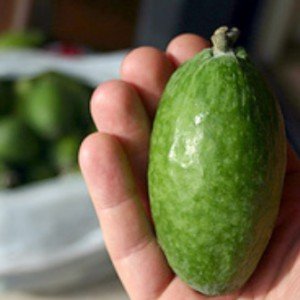
Feijoa is probably one of the most unexpected sources of iodine.
Iodine source
This mineral deserves to be told about it separately. Many are accustomed to replenishing stocks of iodine seafood, but this fruit is also useful for people with iodine deficiency. Feijoa should appear in the diet of people suffering from goiter or hypothyroidism. Regular consumption of fruit will prevent obesity, improve metabolism, reduce sensitivity to cold, relieve fatigue and depression, which are signs of thyroid dysfunction.
Other useful abilities of feijoa fruits:
- prevent chronic colds;
- improve the functioning of the nervous system;
- strengthen the gums;
- prevent anemia;
- strengthen bones;
- accelerate the recovery of the body after injuries and illnesses;
- improve lung health;
- protect against harmful bacteria;
- activate the thyroid gland;
- accelerates wound healing;
- help fight chronic weakness.
How to use
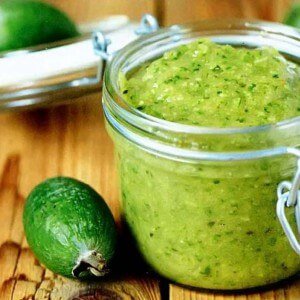
Sweet feijoa fruits are a healthy alternative to sweet desserts. Fruits are eaten fresh, cut in half: with a small spoon, choose the flesh, leaving the skin. One of the advantages of these fruits is that they can be frozen without loss of taste, aroma, color or texture deterioration. This fruit is added to chocolate, tea, cereals, wine, vodka, gin, alcoholic and non-alcoholic cocktails, and ripe fruits canned.
Its extract is introduced into the composition of cosmetics, and the seeds are used as a natural scrub. Masks from the pulp lighten and rejuvenate the skin of the face, and the hair makes it shiny and healthy. In alternative medicine, feijoa is known as a remedy for colds, fevers, hypertension, and unstable blood pressure. This fruit is advised to people struggling with cancer. And gardeners love to grow feijoa as a hedge that can last more than 45 years.
New Zealand Salad
Mix 100 g butter with 150 g sifted flour (technology – as for making shortcrust pastry). The result should be a consistency resembling bread crumbs. Add 3 tablespoons of brown sugar and as much chopped almonds. Peel and finely chop 2 apples, sprinkle them with lemon juice. Peel and cut into large pieces 2 feijoa fruits and smaller ones – 2 bananas, add to apples. Put the fruit mixture on a greased form, sprinkle on top with previously prepared crumbs of flour, sugar and butter, mix gently. Bake for half an hour (apples should become soft, and the crumb will be rosy). Serve with cream, ice cream, honey, custard or yogurt.
Legend has it that a fruit with a funny name feijoa is a young man whom the king of the sea turned into a tree. For what? For the fact that a man who once loved a sea princess, has grieved over the house and decided to leave the underwater kingdom. Since then, he has forever froze between the water and the land by an amazing tree with delicate fruits smelling of the sea.
